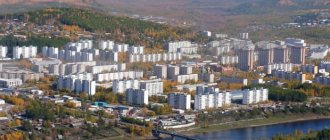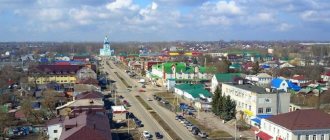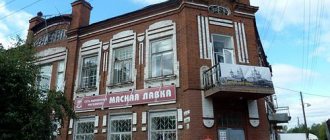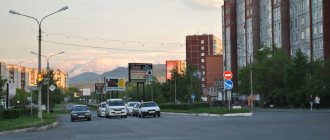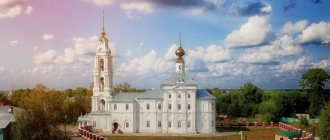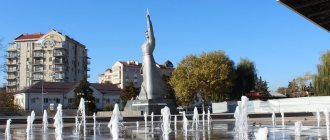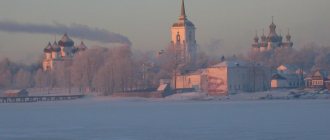City in Buryatia, Russia
| Severobaykalsk Severobaykalsk | |
| Town | |
| Other transcription(s) | |
| • Buryat | Khoito-Baigal |
| Railway station Severobaykalsk | |
| Coat of arms | |
| Location of Severobaykalsk | |
| Severobaykalsk Location of Severobaykalsk Show map of Russia Severobaykalsk Severobaykalsk (Republic of Buryatia) Show map of the Republic of Buryatia | |
| Coordinates: 55°39′N 109°19′E / 55.650°N Latitude 109.317°E / 55.650; 109.317Coordinates: 55°39′N 109°19′E / 55.650°N Latitude 109.317°E / 55.650; 109.317 | |
| A country | Russia |
| Federal subject | Buryatia |
| Based | 1974 |
| City status from | 1980[1] |
| Government | |
| • Mayor | Konstantin Mogilovich Goyayunov |
| Height | 500 m (1600 ft) |
| population (2010 Census)[2] | |
| • General | 24,929 |
| • Evaluate (2018)[3] | 23,365 (−6.3%) |
| Administrative status | |
| • Subordinate | city of republican significance of Severobaikalsk[4] |
| • Capital from | city of republican significance Severobaykalsk[4] |
| Municipal status | |
| • Urban district | Severobaykalsk urban district[5] |
| • Capital from | Severobaykalsk urban district[5] |
| Timezone | UTC + 8 (MSK + 5 [6]) |
| Postal code(s)[7] | 81420 |
| Dial code(s) | +7 30130 |
| OKTMO I WOULD | 81720000001 |
Severobaykalsk
(Russian: Severobaikalsk; Buryat: Khoyto-Baigal,
Khoyto-Baigal
, Mongolian: Khoidbaigal,
Khoidbaigal
) is a town in the Republic of Buryatia, Russia, located at the northern tip of Lake Baikal at the mouth of the Tyya River, 440 km (270 mi) northwest from Ulan-Ude and 490 km (300 mi) northeast of Irkutsk. Population: 24,929 (2010 Census);[2]25,434 (2002 Census);[8]28,336 (1989 Census).[9]
Story
The history of Severobaikalsk is closely connected with the history of the Baikal-Amur Mainline (BAM). It was founded in 1974 as a workers' camp for workers building the BAM, serving as a logistics center and central starting point for the railway project.[ citation needed
] A railway line was developed to the west to Bratsk and to the east to Tynda. At that time, the only settlement in the area was the village of Nizhneangarsk, located on the edge of a swampy plain at the northern end of the lake. It was decided to develop a new town of Severobaykalsk 20 km (12 mi) southwest of Nizhneangarsk on a plateau above the lake, which would allow for further expansion and development in the future.[10] Initially it was planned to increase the population to 140 thousand people.[11]
The first Komsomol volunteers and workers arrived in 1974 and founded a labor camp, which later became the city of Severobaikalsk. The camp was originally called New Year's (Russian: New Year's, lit. New Year
) and consisted of tents, wooden shacks and railroad cars. The camp grew rapidly with the development of the railway, and in 1980 Severobaikalsk was given the status of a city.[1] During this time, until the official completion of the railway in 1984, the city collaborated with Leningrad. After the completion of the Baikal-Amur Mainline, the city fell into decay, many projects were canceled during Perestroika.[10]
The population peaked at around 35,000 residents in the 1980s and then declined. Since the city was founded mainly by Komsomol volunteers, the population is relatively young. Ninety percent of the population is Russian Orthodox and ten percent are Buryats.[10]
Frolikha Nature Reserve and Lake Frolikha
Lake Frolikha arose as a result of the melting of the last glacier on the planet. The average depth of the reservoir is 80 m. Since its formation, the ecosystem has remained virtually unchanged. This is virgin territory where perception works completely differently. The water here is very clean and completely transparent.
The Frolikha reserve was created to preserve relict flora and fauna. To travel here it is better to take a guide. Hiking with children is not recommended. Mountain taiga is “fun” for adults. There are many wild animals here, including predators.
There are anomalous zones and territories with unusual landscapes, for example, dunes in the northern part of the reserve. The cape and Ayaya Bay are interesting. A secluded place, sheltered from the winds. Here you can see the famous Baikal seals, go fishing or hunt.
Climate
Severobaikalsk, as a Siberian city, experiences a subarctic climate characterized by sharp temperature fluctuations between seasons. It can be very warm in summer and very cold in winter. The warmest month of the year in Severobaykalsk is July, when the average temperature is +16 °C (61 °F). The coldest month of the year is January, when the average temperature is -23 °C (-9 °F).
| Climate data for Severobaykalsk | |||||||||||||
| Month | Jan | Feb | Mar | Apr | May | Jun | Jul | Aug | Sep | October | But I | December | Year |
| Average high °C (°F) | −17.3 (0.9) | −14.7 (5.5) | −4.8 (23.4) | 3.6 (38.5) | 12.0 (53.6) | 19.5 (67.1) | 22.4 (72.3) | 20.9 (69.6) | 13.7 (56.7) | 3.8 (38.8) | −6.3 (20.7) | −12.9 (8.8) | 3.3 (38.0) |
| Daily average °C (°F) | −22.9 (−9.2) | −21.6 (−6.9) | −12.9 (8.8) | −2.9 (26.8) | 5.0 (41.0) | 11.9 (53.4) | 15.7 (60.3) | 14.7 (58.5) | 7.9 (46.2) | −1.0 (30.2) | −11.5 (11.3) | −18.2 (−0.8) | −3.0 (26.6) |
| Average low °C (°F) | −28.4 (−19.1) | −28.5 (−19.3) | −21.0 (−5.8) | −9.4 (15.1) | −1.9 (28.6) | 4.4 (39.9) | 9.1 (48.4) | 8.6 (47.5) | 2.2 (36.0) | −5.8 (21.6) | −16.7 (1.9) | −23.4 (−10.1) | −9.2 (15.4) |
| Average precipitation mm (inches) | 16 (0.6) | 12 (0.5) | 10 (0.4) | 17 (0.7) | 28 (1.1) | 37 (1.5) | 65 (2.6) | 63 (2.5) | 42 (1.7) | 23 (0.9) | 22 (0.9) | 19 (0.7) | 354 (14.1) |
| Source: Climate-Data.org [12] | |||||||||||||
Literature
- Yuri Kozlov Road and destinies // “Ogonyok”: magazine No. 52 - 1979 p. 12-13
- Pospelov E.M.
Geographical names of the world: Toponymic dictionary: About 5000 units. M.: Russian dictionaries, Astrel Publishing House LLC, AST Publishing House LLC, 2001. p. 376 - Ch.
ed. Gorkin A.P. Geography of Russia: encyclopedic dictionary. M.: Great Russian Encyclopedia, 1998. p. 529 - Ch.
ed. Lappo G.M. Cities of Russia: encyclopedia. M.: Great Russian Encyclopedia, 1994. p. 415
Cityscape
As in most Soviet-built cities, the city center is dominated by five to six floors. skyscrapers made from precast concrete panels. Because the northern region of Lake Baikal is in a seismically active region, standard high-rise building design has been adapted to be more resistant to earthquakes. The suburbs are dominated by shacks, dating back to the early founding period when Severobaikalsk was a labor camp. Some of these shacks are built from old railroad cars.
The main street of Severobaikalsk is Leningradsky Prospekt, which starts from the station and runs through the central part of the city. The railway station is shaped like a sail and was designed by Leningrad architects. In front of the station there is a monument to the volunteers and workers of Leningrad who built the city. To the north of the station, along Leningradsky Prospekt, is the main square, where the city administration and the Palace of Culture of Railway Workers are located. Severobaykalsk also has a church and a museum dedicated to the history of the Baikal-Amur Mainline.[1]
Slyudyanskie lakes and Cape Ludar
Located 25 km from the city. The two lakes Big and Small are separated by a narrow strip of land. There are wonderful pebble beaches here. The depth of the lakes is shallow, they warm up well.
There is a hiking route along the serpentine path to the mica adits. The ascent takes about 2 hours. In the 1930s, prisoners of the Boguchansky Gulag mined mica here for the radio industry. At the end of the path, a panoramic view of Lake Baikal and Tonky Cape opens up.
Cape Ludar is one of the most beautiful places on Lake Baikal and a monument to Kurykan culture. At the top of the rocky ledge are the remains of an ancient settlement and a cave with petroglyphs. The site of primitive people in the Great Ludar Cave existed more than 4,000 years ago.
Fans of ancient history will be interested in visiting the village of Baikalskoye, on its territory there are several Neolithic sites. The village has a developed infrastructure and there is a place to stay.
Weather in Severobaykalsk
The climate here, as in the entire East Siberian region, is sharply continental. But the proximity of Lake Baikal softens it much. Although this is Northern Baikal, there is a lot of sun here!
The Republic of Buryatia, as well as the entire Baikal region as a whole, has always been distinguished by the high totality of the annual solstice. Which, by the way, reaches 2524 hours a year - this is even more than on the Black Sea!
In terms of the “amount of sun” per year, Buryatia is in 2nd place after the Trans-Baikal Territory! Cloudy days occur mainly in the summer and autumn, amounting to a total of ≈ 38 days a year. It’s not for nothing that people say: “Sunny Buryatia!”
